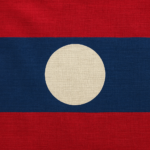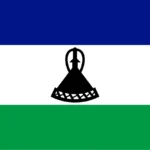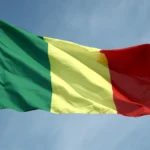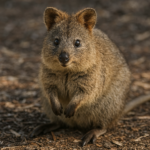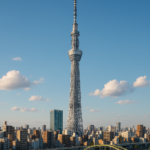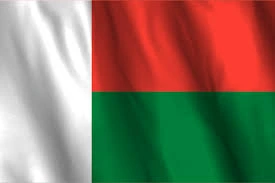
Welcome to our exploration of the enchanting island of Madagascar! Known for its unique biodiversity and rich cultural heritage, Madagascar is a place that captivates the imagination. We will delve into 25 fascinating facts about this extraordinary destination. From its stunning landscapes and endemic wildlife to its vibrant traditions and history, Madagascar offers a wealth of intriguing insights. Whether you’re a seasoned traveler, a nature enthusiast, or simply curious about this remarkable island, join us as we uncover the wonders of Madagascar!
Total Area: Madagascar’s total area is approximately 587,040 square kilometers, making it the fourth-largest island in the world. This vast landmass is located off the southeastern coast of Africa and is separated from the mainland by the Mozambique Channel. Its size contributes to a diverse range of ecosystems, climates, and landscapes, including rainforests, deserts, and highlands, which support a rich variety of flora and fauna.
Population: As of 2024, the population of Madagascar is estimated to be around 31.96 million people. This population is characterized by a youthful demographic, with a significant portion under the age of 15. The population density varies across the island, with urban areas such as Antananarivo, the capital, experiencing higher concentrations of people compared to the rural regions, where many communities engage in agriculture and traditional lifestyles.
Independence: Madagascar gained its independence on June 26, 1960, after a long history of colonial rule, primarily under French control. The struggle for independence was marked by nationalist movements and a desire for self-determination. Since gaining independence, Madagascar has faced various political and economic challenges, but it has also worked to develop its national identity and governance structures.
Endemic Plant Species: The island is home to over 11,000 endemic plant species, meaning these plants are found nowhere else on Earth. This remarkable biodiversity is due to Madagascar’s long isolation from other landmasses, allowing unique evolutionary processes to occur. Many of these plants, such as the famous baobab trees and various orchids, are adapted to the island’s diverse climates and habitats.
Lemurs: Madagascar is renowned for its unique wildlife, particularly the 107 known species of lemurs, all of which are endemic to the island. These primates vary in size, behavior, and habitat preferences, with some living in the rainforests while others inhabit dry forests. Lemurs play a crucial role in the ecosystem as seed dispersers and are a significant draw for ecotourism, although they face threats from habitat loss and hunting.
Annual Precipitation: Annual precipitation in Madagascar can vary greatly, from about 2,000 mm (80 inches) in the northwest to around 360 mm (14 inches) in the southwest. This variation creates distinct climatic zones that influence agriculture, biodiversity, and human settlement patterns. The northwest region, with its higher rainfall, supports lush rainforests, while the drier southwest is characterized by arid landscapes and unique flora adapted to low moisture.
Highest Point: The highest point in Madagascar is Maromokotro, with an elevation of 2,876 meters (9,436 feet). Located in the northern part of the island, Maromokotro is part of the Tsaratanana Massif and is a popular destination for hikers and nature enthusiasts. The mountain’s elevation contributes to a cooler climate and diverse ecosystems, including montane forests that host unique species.
Administrative Divisions: Madagascar is divided into 23 regions, each with its own administrative structure and local governance. These regions are further subdivided into districts and communes, reflecting the island’s diverse cultures and ethnic groups. This administrative division plays a crucial role in local governance, resource management, and the delivery of public services.
Airports: There are at least 12 airports in Madagascar, facilitating both domestic and international travel. The main international airport is Ivato International Airport, located near Antananarivo, which connects Madagascar to various global destinations. The network of airports is essential for tourism, trade, and transportation, given the island’s unique geography.
Rural Population: Approximately 59.44% of Madagascar’s population lived in rural areas in 2023. These rural communities are often engaged in subsistence farming, fishing, and traditional crafts. The rural lifestyle is closely tied to the land and natural resources, with many families relying on agriculture for their livelihoods. However, rural areas often face challenges such as limited access to healthcare, education, and infrastructure.
UNESCO World Heritage Sites: Madagascar has 3 UNESCO World Heritage Sites, recognized for their outstanding natural and cultural significance. These sites include the Tsingy de Bemaraha National Park, known for its unique limestone formations, and the Rainforests of the Atsinanana, which are critical for biodiversity conservation. These designations help promote conservation efforts and sustainable tourism, highlighting Madagascar’s rich natural heritage.
Agriculture’s Contribution: Agriculture contributes a significant portion to Madagascar’s GDP, historically making it a major sector of the economy. Key agricultural products include rice, vanilla, coffee, and cloves, with vanilla being one of the country’s most famous exports, renowned for its quality and flavor. The agricultural sector employs a large percentage of the population, particularly in rural areas, where farming practices are often traditional and labor-intensive. However, the sector faces challenges such as climate variability, land degradation, and market access, which impact the livelihoods of many farmers.
Ethnic Groups: There are approximately 20 ethnic groups that make up the Malagasy people, each with its own distinct language, culture, and traditions. The largest ethnic group is the Merina, who primarily inhabit the central highlands. Other notable groups include the Betsimisaraka, Tsimihety, and Sakalava, each contributing to the rich tapestry of Madagascar’s cultural heritage. The diverse ethnicities are reflected in the island’s festivals, music, dance, and traditional practices, fostering a vibrant cultural landscape.
Coastline: Madagascar’s coastline is about 4,828 kilometers long, featuring a variety of landscapes, including sandy beaches, rocky cliffs, and mangrove forests. This extensive coastline is home to rich marine biodiversity, including coral reefs, sea turtles, and numerous fish species, making it a vital area for fishing and tourism. The coastal regions also face environmental pressures such as overfishing and coastal erosion, necessitating sustainable management practices to protect these ecosystems.
National Parks: There are 25 national parks in Madagascar, each designated to protect the island’s unique flora and fauna. These parks serve as crucial conservation areas for many endemic species, including lemurs, chameleons, and various birds. They also provide opportunities for ecotourism, allowing visitors to experience Madagascar’s natural beauty while supporting conservation efforts. The parks vary in habitat types, from rainforests to dry deciduous forests, showcasing the island’s ecological diversity.
Forested Land: Approximately 21.6% of Madagascar’s land was forested as of 2001, although this figure has been subject to change due to deforestation and land use changes. Madagascar’s forests are home to a wealth of biodiversity, including many species that are found nowhere else on Earth. The forests face significant threats from logging, agriculture, and slash-and-burn practices, leading to habitat loss and environmental degradation. Conservation initiatives are critical to preserving these vital ecosystems.
Average Temperature: The average annual temperature in Antananarivo, Madagascar’s capital, hovers around 20°C. This moderate climate is influenced by the city’s elevation, situated in the central highlands. The temperature can vary seasonally, with cooler temperatures during the winter months and warmer conditions in the summer. The climate supports a variety of agricultural practices and contributes to the overall livability of the city.
Indigenous Languages: There are 12 living indigenous languages spoken in Madagascar, with Malagasy (Merina dialect) and French being the official languages. Malagasy is rooted in the Austronesian language family and reflects the island’s cultural diversity. The use of multiple languages highlights the rich linguistic heritage of the Malagasy people, and efforts to promote and preserve these languages are important for cultural identity and education.
Youth Population: While a precise current figure is unavailable, a significant percentage of Madagascar’s population is under the age of 15. This youthful demographic presents both opportunities and challenges for the country. On one hand, a young population can drive economic growth and innovation; on the other hand, it places pressure on education, healthcare, and employment systems, necessitating strategic investments in youth development.
Higher Education: There are at least 6 universities in Madagascar, offering a range of programs in fields such as science, engineering, arts, and social sciences. These institutions play a crucial role in the education system, providing higher education opportunities for students and contributing to the country’s human capital development. However, access to quality education and resources can vary, particularly between urban and rural areas.
Access to Electricity: Access to electricity in Madagascar is limited, with a relatively low percentage of the population having access to reliable power sources. This lack of infrastructure poses challenges for economic development, education, and healthcare services. Efforts to expand access to electricity, including renewable energy projects, are essential for improving living conditions and fostering sustainable development in the country.
Chameleons: Madagascar is home to around 100 species of chameleons, making it the world’s most diverse region for these unique reptiles. The island’s varied habitats, from lush rainforests to arid regions, support a range of chameleon species, each adapted to specific environments. These fascinating creatures are known for their ability to change color, which they use for communication, camouflage, and temperature regulation, as well as their distinctive features, such as long tongues and prehensile tails that aid in climbing. Unfortunately, many chameleon species face threats from habitat destruction and the illegal pet trade, making conservation efforts critical to preserving their populations and habitats.
Extinction of the Malagasy Giant Tortoise: The Malagasy giant tortoise went extinct around the 17th century, primarily due to human activities such as hunting and habitat destruction. These tortoises were once among the largest land animals on the island, and their extinction is a stark reminder of the impact humans can have on biodiversity. Today, conservationists focus on protecting existing tortoise species and their habitats to prevent further losses and ensure the survival of Madagascar’s unique wildlife.
Holocene Volcanoes: Madagascar has 5 Holocene volcanoes, none of which have been active since 1800 CE. These volcanoes, located primarily in the northern part of the island, have shaped the landscape and contributed to the rich soil found in some regions, supporting agriculture and diverse ecosystems. While they are currently dormant, their geological history has influenced the island’s biodiversity and topography, creating unique habitats for various species.
Mammal Endemism: Approximately 98% of Madagascar’s mammals are found nowhere else on Earth, highlighting the island’s incredible biodiversity. This high level of endemism is a result of Madagascar’s long isolation from other landmasses, allowing species to evolve in unique ways. Among these mammals are iconic species such as lemurs, fossa, and various bats and rodents. The conservation of these endemic species is crucial, as they play significant roles in their ecosystems and are often threatened by habitat loss and environmental changes. Efforts to protect Madagascar’s unique wildlife are essential for maintaining the island’s ecological integrity and heritage.
Frequently Asked Questions about Madagascar:
1. What is Madagascar known for?
Madagascar is renowned for its incredible biodiversity, with about 90% of its wildlife found nowhere else on Earth. This includes iconic species such as lemurs, chameleons, and the fossa. The island is also famous for its unique ecosystems, including rainforests, deserts, and coral reefs, as well as its rich cultural heritage influenced by African, Asian, and European traditions.
2. What are the main languages spoken in Madagascar?
The official languages of Madagascar are Malagasy and French. Malagasy is the most widely spoken language, with several dialects across different regions. French is used in government, education, and business, reflecting the country’s colonial history.
3. What is the best time to visit Madagascar?
The best time to visit Madagascar is during the dry season, which runs from May to October. This period offers pleasant weather and is ideal for wildlife viewing and outdoor activities. However, if you’re interested in seeing the island’s lush landscapes, visiting during the rainy season (November to April) can also be rewarding, though travel may be more challenging due to weather conditions.
4. Is Madagascar safe for tourists?
While Madagascar offers stunning sights and experiences, safety can vary by region. Tourists are generally advised to stay in well-traveled areas, avoid displaying valuables, and be cautious at night. It’s important to stay informed about local conditions and to follow travel advisories from your government.
5. What currency is used in Madagascar?
The currency used in Madagascar is the Malagasy Ariary (MGA). It’s advisable to exchange some currency before arriving, as ATMs may not be widely available in rural areas. Credit cards are accepted in some hotels and restaurants in larger cities, but cash is often preferred.
6. What are the top tourist attractions in Madagascar?
Some of the top attractions in Madagascar include:
- Avenue of the Baobabs: A stunning natural monument featuring ancient baobab trees.
- Andasibe-Mantadia National Park: Known for its rich wildlife, particularly various species of lemurs.
- Isalo National Park: Famous for its dramatic sandstone formations and diverse ecosystems.
- Nosy Be: A popular island destination known for its beaches and marine life.
- Tsingy de Bemaraha: A UNESCO World Heritage site featuring unique limestone formations.
7. What is the cuisine like in Madagascar?
Madagascar’s cuisine is influenced by various cultures and features a mix of rice, meat, seafood, and vegetables. A staple dish is “vary,” which is rice served with various accompaniments. Popular ingredients include zebu (a type of cattle), seafood, and local spices. Street food is also prevalent, offering a taste of local flavors.
8. What wildlife can I see in Madagascar?
Madagascar is home to an array of unique wildlife, including:
- Lemurs: Over 100 species, including the ring-tailed lemur and the indri.
- Chameleons: Madagascar hosts half of the world’s chameleon species.
- Birds: Many endemic species, such as the Madagascar fish eagle and the vangas.
- Reptiles: Various species of snakes, geckos, and tortoises.
- Flora: The island is known for its diverse plant life, including the famous baobab trees and orchids.
9. How do I get around in Madagascar?
Getting around Madagascar can be challenging due to limited infrastructure. Common options include:
- Domestic Flights: Useful for covering long distances quickly.
- Taxi-Brousse: Shared minivans or buses that are a popular, albeit slow, way to travel between towns.
- Private Car Hire: Recommended for more flexibility, especially for exploring remote areas.
- Walking: In cities and towns, walking is a great way to explore local culture.
10. What should I pack for a trip to Madagascar?
Packing for Madagascar depends on the season and activities planned. Essentials include:
- Lightweight clothing: For warm weather and outdoor activities.
- Sturdy shoes: For hiking and exploring.
- Insect repellent: To protect against mosquitoes.
- Sunscreen and a hat: For sun protection.
- Binoculars: For wildlife watching.
- A rain jacket: If traveling during the rainy season.
